|
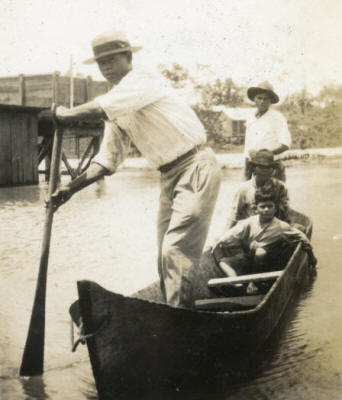 THIS IS THE FIRST PAGE
of documents for the SECOND HALF of 1930
on Nicaragua's Caribbean Coast
region, housing materials dated during the months of
July, August & September.
THIS IS THE FIRST PAGE
of documents for the SECOND HALF of 1930
on Nicaragua's Caribbean Coast
region, housing materials dated during the months of
July, August & September.
The echoes from Pedrón’s brief May
offensive in the mining
districts begin to recede, overtaken
by events in the Coast itself.
The downward economic spiral spawns
organizing drives and strikes in the
banana plantations and on the boats
& loading docks (see Marston’s
monthly reports; on July 5, e.g., he
references three different episodes
of labor organizing & unrest in the
banana zone). Sandino is
formally extending his influence
over the Upper Río Coco, as we see
in his "regulaciones" on cutting
timber — though according to German
immigrant & mahogany magnate Enrique
Gulke, Sandino issued similar
regulations in the same zone in late
1927 (see Gulke's statement of 28
June 1928).
From the Bocay
Valley & Upper Coco the EDSN begins
to stretch its influence east,
making quick strikes against
civilian “traitors” like
José Lleset, a.k.a. Cubano,
a well-known merchant on the Upper
Coco killed at his store at
Aguasbila (a bit downstream from
Sang Sang, near Asang where the
anthropologist Mary Helms did her
fieldwork in the early 1960s) for
his collaboration with the US
Marines. Further downstream at
Sawa Boom near the Coco’s mouth,
Benny Muller (or
Mueller), US
citizen & longtime “bamboo white,”
flees for his life to escape likely
EDSN retribution, taking his large
family with him.
The
imperial spotlight shines
especially bright in the reports of
Lt. Darrah (22 Sept) & Lt. Waddell
(23 Sept), the letter of Capt. Stent
(10 Sept), and in the Benny Muller
case (27 Sept). The resolution
passed by the “Comerciantes y
algunos vecinos” (merchants & some
citizens) of Cabo Gracias a Dios
demanding two new Guardia posts on
the Upper Coco (30 Sept) also merits
attention.
|
|
PERIOD MAPS
|
|
1894 mosquito
shore

27 MB,
library of congress
|
1920s
Standard Fruit

6.5 mb,
US National archives
|
1928 Rio wanks
Patrol

3 mb, us
national archives
|
1931 Moravian

2.4 mb,
comenius press
|
|
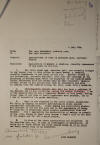
|
12 July
1930.
Instructions in case of Geronimo Ruiz,
captured bandit, Pis Pis.
Col. John Marston
to Jefe Director GN, p. 1.
|
|
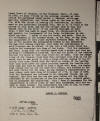
|
2 July 1930.
Instructions in case of Geronimo Ruiz,
captured bandit. Statement of
Manuel J.
Mendoza, Police Agent, Pis Pis.
Enclosure in Col.
John Marston to Jefe Director GN,
p. 2.
|
|
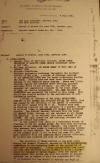
|
5 July 1930.
Record of Events for June 1930, Eastern
Area.
Col. John Marston, Bluefields, to
the Jefe Director GN, Managua, p. 1.
"A strike
of planters occurred on the ESCONDIDO
RIVER and its upper tributaries during
the month. ... There was little disorder
except one incident where striking
planters destroyed fruit of non
strikers. All involved were arrested but
immediately released by the Local Judge
of RAMA, an obvious incompetent. ... A
strike of laborers of the CUKRA
DEVELOPMENT COMPANY at RIO GRANDE BAR
occurred during the month. This was
caused by the reduction of the number of
stevedores on the fruit barges from 36
to 24. Threats were made by striking
laborers but the presence of a Guardia
officer at critical times at RIO GRANDE
BAR prevented trouble. The COMPANY
secured laborers from the upper RIO
GRANDE RIVER, cutting out the laborers
at RIO GRANDE BAR entirely. ... there is
a threatened strike of planters on the
RIO GRANDE RIVER, who have been
delivering bananas to the AMERICAN FRUIT
COMPANY. The leaders of this movement
have drawn up regulations enjoining
orderly conduct of their members, the
option of delivering fruit at the
present price or not as much as each man
sees fit, and have conferred with the
AMERICAN FRUIT COMPANY officials. No
trouble has occurred and none is
anticipated. The promotion of these
strikes on the East Coast during the
present financial depression is an
enlightening commentary on the reasoning
power of the population of this part of
NICARAGUA. A more unpropitious time
could not have been selected for an
attempt to force a higher price for
bananas or better wages. With the amount
of unemployment that exists and with the
amount of bananas produced far in excess
of what the companies will buy, it is
hopeless for the people to enforce any
kind of demand on the companies
furnishing capital on the Coast."
|
|
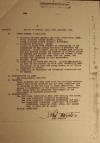
|
5 July 1930.
Record of Events for June 1930, Eastern
Area.
Col. John Marston, Bluefields, to
the Jefe Director GN, Managua, p. 2.
|
|
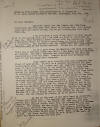
|
7 July 1930.
Letter from Lt.
W. W. Benson, Puerto Cabezas, to
Capt. W. C. Hall, p. 1.
|
|
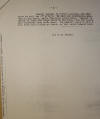
|
7 July 1930.
Letter from Lt.
W. W. Benson, Puerto Cabezas, to
Capt. W. C. Hall, p. 2.
|
|
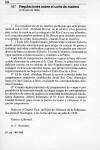
|
8 July 1930.
Regulaciones sobre el corte de madera,
Gen. Augusto C.
Sandino, Cuartel General del
EDSNN.
Source:
A. C. Sandino, El pensamiento vivo,
Sergio Ramírez, ed. & comp. (Managua,
1984), vol. 2, p. 122.
|
|
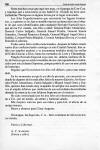
|
21 July
1930.
Carta de Gen.
Augusto C. Sandino, Cuartel
General del EDSNN, to Pedro José Zepeda,
México D.F.
(second
page of letter in Sandino, El
pensamiento vivo, v. 2, p. 130,
included here for its brief references
to Col. Abraham Rivera & Cabo Gracias a
Dios.) "Entre muchas cosas
que aquí nos urge, es el parque de
Con-Con, y supongo que a estas horas ya
nos habra Ud. enviado las doce
ametralladoras Thompson en alguna forma
por el lugar convenido. ¶ Los Jefes
Expedicionarios que recorreran los
lugares fronterizos, y a quienes se les
han extendido nuevas credenciales con el
objeto de que sean identificados ante
cualquier Enviado Especial suyo, que de
esa Ud. mande, son ellos a saber:
General Pedro Altamirano, General Carlos
Salgado, General Ismael Peralta, General
Simón González, General Francisco
Estrada, General Miguel Angel Ortéz y
Guillén, Coronel Pedro Blandón, Coronel
Abraham Rivera y Coronel Domitilo
Ledezma. ¶ Todos estos Jefes arriba
mencionados, después de haber estado
varios días conferenciando conmigo en
este Cuartel General, han salido con
amplios poderes y se encuentran tendidos
desde las orillas del Cabo Gracias a
Dios, hasta las montañas de León y
Chinandega. ¶ Ningún Enviado Especial
suyo ante mi, deberá confiarse de Jefes
de fuerzas que no esten investidos de
sus correspondientes credenciales por
esa Jefatura Suprema, porque podría el
caer en en una celada del enemigo. ¶
Dígame que fin tuvieron los diez mil
dólares, para estar entendido. ¶ En los
momentos en que le escribo la presente,
me encuentro rodeado de algunos de los
más altos Jefes de nuestro Ejército, los
Generales Pedro Altamirano, Carlos
Salgado y Miguel Angel Ortéz y Guillén,
quienes han estado muy ocupados en
arreglar sus asuntos relativos al amplio
informe que rindieron de sus actividades
desarrolladas durante la estancia de
esta Jefatura Supema en el exterior. ¶
He sido comisionado por los tres Jefes
en referencia para presentar a Ud., por
mi medio, un atento y fraternal saludo.
¶ Mis mejores caricias para sus niños y
para Ud. El afecto de su amigo sincero,
¶ Besos y abrazos para Cesar Augusto. ¶
Nicaragua, las Segovias, C.A., Julio
veintiuno de mil novecientos treinta. ¶
Patria y Libertad. ¶ A. C. SANDINO
(Firma y sello)
|
|
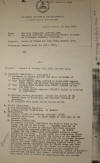
|
31 July
1930.
Record of Events for July 1930, Eastern
Area. Col.
John Marston, Bluefields, to Jefe
Director GN, Managua, p. 1.
|
|
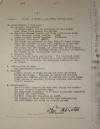
|
31 July
1930.
Record of Events for July 1930, Eastern
Area. Col.
John Marston, Bluefields, to Jefe
Director GN, Managua, p. 2.
|
|
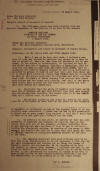
|
11 August
1930.
Report of Movement of Bandits,
Lt. L. Curcey, La Cruz de Rio
Grande, to Col. John Marston,
Bluefields.
"From: ¶ The Area
Commander ¶ To: The Jefe Director ¶
Subject: Report of movement of bandits.
¶ 1. The following report has been
received from the District Commander of
the District of La Cruz de Rio Grande:
GUARDIA NACIONAL ¶ DISTRICT OF THE RIO
GRANDE ¶ LA CRUZ, NICARAGUA, ¶ 8 August
1930. ¶ From: The District Commander ¶
To: The Area Commander, Eastern Area,
Bluefields ¶ Subject: Information and
report re movement of bandit troops.
Reference: (a) My radios 1208 and 07009
August 1930. ¶ 1. While I was at La Cruz
this date, I noticed a new face in town
and decided to question the person as to
what he was in search of, where he came
from and whether or not he was armed. In
the course of conversation, he informed
me that he was Alfred Hanslaw of
Guasaca, division of Matagalpa, that it
took him ten days to come down the river
from there, that he abandoned his farm
at Guasaca because he was being
continually molested by groups of
bandits and that this last time which
was on or about July fourth he states
that PEDRON whom he recognized as Jefe
of the groups mentioned in reference had
about one hundred (100) followers of
which seventy five percent were armed
with rifles and the other with pistols,
that half of the group were fairly well
dressed and the other half shabby and
that what they wanted was ammunition. ¶
2. He claims that the group of bandits
took trail northwest out of Guasaca and
was very evident that they were headed
for the mining area district, his reason
that it is the CAMINO REAL and a direct
trail to the mines. ¶ 3. He further
states he has given his farm up for
good, that he is in search of work here
on the river in the capacity of mandador
or contractor on any of the company
farms if he can possibly make
connection. I found that he had in his
possession a pistol and an arms permit
long expired. I told him I would have to
take it up and gave him a receipt for
the same. ¶ 4. In addition to the above,
he informs me that the only sufferers of
banditry are farmers. He tells me that
on July fourth they took all of his
animals, clothes, including shoes he was
wearing and what portions of food he had
in his house, leaving him absolutely
nothing. No mention of the group is made
amongst the bandits but that he is sure
that this group was that of PEDRONE
because he recognized PEDRONE himself as
the head of the band. ¶ 5. Mr. Hanslaw
mentioned some good citizens here in La
Cruz and on my investigation as to his
character I find that he was well
recommended and vouched for as being the
farmer of Guasaca, honest and
trustworthy. He is stopping at La Cruz
and expects to remain here. However, I
informed him that in the event he wanted
to leave here that I wanted him to see
me before he did. I also instructed the
corporal in charge at La Cruz to keep an
eye on him so that should anything
develop I can get him immediately. It is
my opinion he is all right though. ¶ /s/
L. CURCEY. ¶ (signed) JOHN MARSTON"
|
|
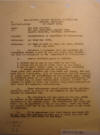
|
12 August
1930.
Establishment of Department of
Prinzapolka, Jefe
Director GN, Managua, to Area
Commander, Central Area, Jinotega, p. 1.
"Effective
1 September 1930 the province of
Prinzapolka becomes a part of the Area
under your command [Central Area] and
will be designated as the "Department of
Prinzapolka." Please establish
posts as follows: 1 officer and 15 men
at San Pedro de Pis Pis. 1 Officer
and 15 men at Siuna (near La Luz Mine).
6 men at Wuani (near La Luz Mine). ...
These posts will comprise the Department
and Tungla, the only post now in
Prinzapolka, will be considered, for all
purposes, as under the jurisdiction of
the Eastern Area. Tungla is
estimated close to the border line
between Prinzapolka and Rio Grande and,
if later developments indicate it more
convenient to place it under the Central
Area, this headquarters will issue the
necessary instructions. ..."
|
|
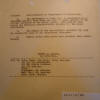
|
12 August
1930.
Establishment of Department of
Prinzapolka, Jefe
Director GN, Managua, to Area
Commander, Central Area, Jinotega, p. 2.
|
|
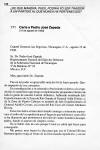
|
15 July
1930.
Carta de Gen.
Augusto C. Sandino, Cuartel
General del EDSNN, to Pedro José Zepeda,
Mexico D.F., p. 1.
"Cuartel General,
las Segovias, Nicaragua, C.A., agosto 15
de 1930. ¶ Sr. Dr. Pedro José Zepeda ¶
Representante General del Ejército
Defensor ¶ de la Soberanía Nacional de
Nicaragua ¶ 3a de Balderas, No 24 ¶
México, D.F. ¶ Muy appreciable Dr.
Zepeda: ¶ Fue en mi poder su appreciable
nota del 16 de Junio pasado. Quedo
impuesto de sus conceptos. ¶ En
consideración a su reiterado
ofrecimiento relativo a la expedición,
le manifiesto que tengo completamente
preparado el ánimo de toda la gente de
nuestro Litoral Atlántico, habiendo
nombrado Jefe Expedicionario de la Zona
de Rio Grande al General Adán Gómez, y
de la Zona de Puerto Cabezas se nombró
de Jefe Expedicionario al General Adolfo
Covans, asi como del Río Coco al Coronel
Abraham Rivera. ¶ Estos tres Jefes se
han entrevisado conmigo y solamente
esperamos el arribo de la expedición por
el lugar de que hablamos y para ello se
ha dispuesto que permanezca un retén de
cuatro hombres desequipados, dando el
aspecto de simples civiles. ¶ No le
hablo más de esto porque Usted ya sabrá
que hacer para conseguirlo. ¶ Me parece
muy bueno la idea para que sea el
Coronel Rivera Bertrand quien venga al
frente de la mencionada expedición, y en
ese . . . "
|
|
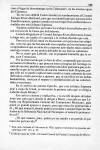
|
15 July
1930.
Carta de Gen.
Augusto C. Sandino, Cuartel
General del EDSNN, to Pedro José Zepeda,
Mexico D.F., p. 2.
". . . Caso
el lugar de desembarque sería
Calansanún, en las mismas aguas del
Caratasca. ¶ En ese caso debera Usted
extender su nombramiento al Coronel
Enrique Rivera Bertrand, para que sea
identificado por nuestros Jefes
Expedicionarios, quienes estarán con sus
respectivas credenciales extendidas por
esta Jefatura Suprema. ¶ Estamos
satisfechos por todos los trabajos
desarrollados pur Usted en favor de la
Causa que defendemos. ¶ La nota dirigada
por el Coronel Enrique Rivera Bertrand a
Usted, la hago mía, en cuanto a lo
ajustada a la verdad absoluta que está.
¶ Para mi es difícil entrar en
discusiones con personas tan estupidas,
como las que me han atacado a las
espaldas en los momentos que
comprendieron que en atención a mayores
actividades mías contra el enemigo
común, no me podría defender de sus
nuevas calumnías. ¶ No es cierto que
Laborde, con su pequeña camarilla que le
rodea, sean Comunistas. ¶ Por la
observación que yo hice de ellos,
comprendí que son conservadores
furibundos y que parecen tener consignas
del enemigo común de nuestros pueblos
para estorbar toda labor patriótica que
se desarrolle en pro de los pueblos para
estorbar toda labor patriótica que se
desarrolle en pro de los pueblos de
nuestra América Indo-Hispaña, porque
solo así se puede explicar tanto insulto
y tanta calumnía de esos individuos
conta personas a quienes, por su
sacrificio en las luchas humanitarias,
merecen el respeto y consideraciones de
las colectividades conscientes. En el
archivo de nuestro Ejército, que esta
Jefatura Suprema dejó a cargo de Usted,
se encuentra la primera carta que yo
dirigí a Laborde desde Mérida. ¶ Esa
carta es extensa y explicativa, y la
escribí después de haber leído una carta
que Laborde le dirigió a Martí, creyendo
yo que Laborde era Representante General
del Comunismo Mexicano, para quien yo
guardo aprecio y respeto, pero que nunca
he pertenecido a el. ¿De que manera
Laborde podría ser traidor a nuestro
Ejército Defensor de la Soberanía
Naional de Nicaragua, si nunca ha
pertenecido a él? ¶ ¿De qué manera,
pues, podría yo ser traidor a un partido
al que nunca he pertenecido? . . . "
|
|
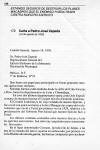
|
1.
18 July 1930.
Carta de Gen.
Augusto C. Sandino, Cuartel
General del EDSNN, to Pedro José Zepeda,
Mexico D.F., p. 1.
"Cuartel
General, Agosto 18, 1930. ¶ Sr. Pedro
José Zepeda ¶ Representante General del
¶ Ejército Defenso de la Soberanía ¶
Nacional de Nicaragua. ¶ México, D.F. 3a
de Balderas, No. 24. Que baste este
papel para participarle en lineas
generales nuestras operaciones
militares. ¶ Nuestras fuerzas están
tendidas desde la orilla del Cabo
Gracias a Dios, hasta los departamentos
de León y Chinandega. ¶ En esos dos
últimos departamentos opera como Jefe
Expedicionario de nuestras fuerzas el
Coronel efectivo Domitilo Ledezma. ¶ El
Coronel Ledezma es un viejo soldado de
nuestro Ejército, y fue con él con quien
enviamos a León y Managua las copias de
los documentos que envié a Usted por
primera vez en 1929, relativos a la
proclamación del Gobierno Povisional que
nuestro Ejército hizo a Usted. ¶ Los
últimos combates sostenidos entre
nuestras fuerzas y la de los ejércitos
mercenarios, han sido muy sangrientos
pero sensacionales. Son cuatro. ¶ En el
lugar denominado Cosmate, jursdicción de
Jalapa, a last tres de la mañana del
nueve cayeron en emboscada, por primera
vez en la Historia de nuestra Guerra,
las fuerzas compuestas por cien hom- . .
."
|
|
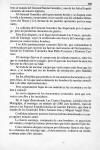
|
2.
18 July 1930.
Carta de Gen.
Augusto C. Sandino, Cuartel
General del EDSNN, to Pedro José Zepeda,
Mexico D.F., p. 2.
". . .
bres al mando del General Simón
González, uno de los Jefes
Expedicionarios de nuestro Ejército. ¶
El General González salió gravemente
herido y se disputa entre la vida y la
muerte, como tantas veces sucede con los
soldados Defensores del Honor y la
Libertad de los pueblos oprimidos por
los magnates. ¶ La columna del General
González fue dispersada por el enemigo,
pero no perdieron elementos de guerra. ¶
Dos días después, en el lugar denominado
Las Cruces, jurisdicción de Jinotega,
cayó en emboscada una fuerza del enemigo
compuesta por cuatrocientos hombres. ¶
Los Jefes pertenecienes a nuestro
Ejército, que comandaban la emboscada en
que cayeron las fuerzas mercenarias de
Norteamérica, fueron los Tenientes
Coroneles Juan Pablo Umanzor y Dionisio
Centeno. ¶ El enemigo dejó en el campo
mas de ochenta muertos, entre los que se
contaban nueve yanquis, pero el que más
nos llamó la atención fue uno de ellos
por su edad. ¶ Se trata de un anciano
yanqui que vestia trajes más finos que
los otros, y se notaba que era un hombre
de estimación, pero bandido como todos.
¶ En las alforjillas que portaba se le
encontraron documentos y objetos finos,
de los que usan solamente los hombes de
mucha comodidad o de altas
representaciones. ¶ Pero seguramente
bajas de esa naturaleza las esconden y
no las dan a conocer. ¶ Le envió algunos
de los documentos avanzados, para que
convenza con ellos a los incredulos. ¶
En el lugar denominado Las Cuatro
Esquinas, jurisdicción de Matagalpa, el
enemigo, en numero de (100) cien
hombres, trato de atacar a las Fuerzas
Expedicionarias de nuestro Ejército, que
iban al mando de los Generales Pedro
Antonio Irías y Miguel Angel Ortéz. ¶
Confidencialmente nuestras fuerzas
habían abandonado el campo quince
minutes antes. ¶ La fuerza enemiga,
compuesta de cien hombres, se posesionó
del campo y ocupó las mismas posiciones
que tenía nuestro Ejército. ¶ Cinco
minutes despues entraron por diferentes
flancos tres fuertes columnas del
enemigo que, al desconocerse, trabaron
un renido combate entre ellos mismos. .
. . "
|
|
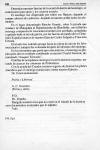
|
3.
18 July 1930.
Carta de Gen.
Augusto C. Sandino, Cuartel
General del EDSNN, to Pedro José Zepeda,
Mexico D.F., p. 3.
" . . . enteradas
nuestras fuerzas de lo ocurrido dentro
del enemigo, se enderazaron para atrás y
les cayeron en pelo. ¶ El enemigo fue
dispersado por todos sus flancos,
dejando el campo cubierto de cadáveres,
dejando en nuestro poder todos los
elementos. ¶ En el lugar denominado
Rancho Grande, sobre la picada que
conduce de Matagalpa al Departamento de
Bluefields, una columna enemiga
compuesta de trescientos hombres fue
arrollada, aniquilada y quitado todo su
tren de Guerra, por las fuerzas al mando
de los Generales Expedicionarios de
nuestro Ejército Carlos Salgado y
Francisco Estrada. ¶ El triunfo fue
redondo porque hasta la señora de uno de
los Jefes mercenarios yanquis fue
avanzada después del desastre del
enemigo. ¶ En los momentos que participó
estas noticias, el enemigo se prepara
para dar un combate combinado en nuestro
Cuartel General, denominado “Joaquín
Trincado”. ¶ Flotillas de aeroplanos
enemigos recorren nuestras regiones,
tratando de acercar las columnas de
filibusteros. ¶ Con la ayuda del Creador
estamos seguros de destruir los planes
macabros que el enemigo pueda traer
contra nuestro Ejército. ¶ De Usted
atentamente. ¶ Patria y Libertad. ¶ A.
C. SANDINO (Firma y sello) ¶ P.D. Dr.
Zepeda: ¶ Ruégole mostrar a los que no
creen en el triunfo de la Justicia esos
documentos avanzados que le adjunto. ¶
Vale."
|
|
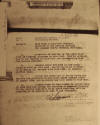
|
19 August
1930.
High Rate of increase Venereal Diseases
in the Guardia Nacional, 9th Company
Puerto Cabezas.
Department
Medical Officer T. Simmer to
Commanding Officer.
"1. Attention is
invited to the again high rate of
venereal diseases in this Port, this is
probable due to the Sanidad of this Port
not cooperating with the Guardia
Nacional. ¶ 2. General Order #28,1928 is
not being complied with in this port,
prostitution is carried on in nearly all
cantina’s in this town, by
none-registered women. ¶ 3. Letter was
forwarded to Doctor Montgarlo calling
his attention to the above named subject
about 12 August 1930, but no action has
been taken to this date. ¶ 4. Unless
there is some immediate action taken by
some Sanitary Doctor the increase of
venereal diseases in the Guardia here
will be so great that they will be
probable of no service in case of any
emergency. ¶ (signed) T. Simmer"
|
|
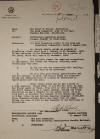
|
20 August
1930.
Information regarding Alcalde (Elesia
DUARTE) of Bluefields.
Lt. Fred
Riewe, Chief of Police,
Bluefields, to Area Commander,
Bluefields.
"Reference: (a)
Jefe Directors letter to all Area and ¶
Department Commanders, dated 2 August,
1930. ¶ 1. Sr. Elesia Duarte served as
Alcalde of Bluefields (first term) from
1 January to 31 December, 1929. He was
reelected in the November election for a
period of two years, which will expire
31 December, 1931. ¶ 2. His attitude
toward the American occupations is
indifferent, and toward the Guardia,
officially good, unofficially very poor.
¶ 3. He has not had any connection with
banditry. (to the best of my knowledge)
¶ 4. He is a very poor Public
Administrator and can not account, or
show, how Public Funds are disposed.
During his Administration as Alcalde of
Bluefields no improvements have been
made. ¶ 5. About twenty years ago he was
a miner or a mine operator, (Colin Mine)
in the Pis Pis Area. He also was Fiscal
Agent at Wuani. From 1916 to 1925 he
worked for the Fruit Companies as a
common laborer. During the 1926
Revolution he was a General in the
Liberal party. He also took part, or
directed the robbery of the Bluefields
Bank on 2 May, 1926. He and Beltran
Sandoval disposed of $60,000 Sixty
Thousand dollars which was taken from
the Bank. During the year of 1925 he was
Treasurer of the Municipal of
Bluefields. ¶ (Signed) Fred Riewe, ¶ 1st
Endorsement, ¶ HEADQUARTERS EASTERN AREA
GUARDIA NACIONAL ¶ Bluefields, Nicaragua
21 August 1930 ¶ From: The Area
Commander. ¶ To: The Jefe Director,
Headquarters Guardia Nacional. ¶ 1.
FORWARDED/ ¶ (Signed) JOHN MARSTON."
|
|
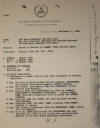
|
1.
1 September 1930.
Record of Events for August 1930,
Eastern Area.
Col. John
Marston, Bluefields, to Jefe
Director GN, Managua, p. 1.
|
|
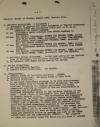
|
2. 1 September 1930.
Record of Events for August 1930,
Eastern Area.
Col. John
Marston, Bluefields, to Jefe
Director GN, Managua, p. 2.
|
|
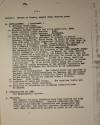
|
3. 1 September 1930.
Record of Events for August 1930,
Eastern Area.
Col. John
Marston, Bluefields, to Jefe
Director GN, Managua, p. 3.
|
|

|
4. 1 September 1930.
Record of Events for August 1930,
Eastern Area.
Col. John
Marston, Bluefields, to Jefe
Director GN, Managua, p. 4.
|
|
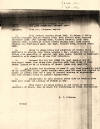
|
1 September 1930.
Progress
Report, Lt. H. J.
Withers, Cacao, to Area
Commander Col. C. B. Matthews, Central Area, Jinotega.
[Source:
USNA/RG127/E202/Box 13]
"1. 27th Cleared Corinto Finca 1000, 22
mules, 4 bulls, arrived Hacienda Jacinto
Garcia 1700, 28th cleared 0740, arrived
Carretera 1520. 29th cleared 0800,
arrived Guasaco, 1500. 30th cleared
0800, arrived La Tronca (Tomas Pineda)
1630. 31st rested animals and overhauled
gear. 1st Sept. cleared 0800, arrived
Cacao 1400. ¶ 2. Owing to steep hills
and condition of trails it is difficult
to average over three leagues a day.
Animals in fair condition with exception
of several very sore backs; Guardia in
excellent condition with exception of
one foot infection. ¶ 3. Crossed Rio Wul
Wul (USMC 5th Regt Special Map of
Nicaragua) about five miles from
junction with Tuma River at noon today.
Expect to be in vicinity of Casuli (same
map Sept 5th. ¶ 4. Sighted two airplanes
at noon 27 Aug. they passed to north of
us. Have seen none since. Smoke candles
were used but were not sighted by plane.
If planes come out a drop of several
cartons of cigarettes and some matches
would be greatly appreciated. ¶ 5.
Inhabitants of this section state that
no bandits have been seen since the
passing of Pedron in May. ¶ 6. This
report is being placed in the hands of
Dionicio Anastacio of Cacao, Juez de
Mesta for forwarding by first
convenience. ¶ H. J. Withers. ¶ COPIES
|
|
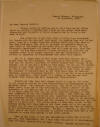
|
10 September
1930.
Letter from Capt. H. N. Stent, Puerto
Cabezas, to Capt. Waddell.
[Source:
USNA/RG127/E38/Box 18]
"Puerto Cabezas, Nicaragua. ¶ 10
September, 1930. ¶ My dear Captain
Waddell: ¶ Please pardon my writing you
in this form but my office force is
reduced to nothing and I have no one
except Lieutenant Benson who can
typewrite a letter properly and he is up
to his neck in work. ¶ The situation on
the Coco River is still very uncertain.
Lt. Darrah with six men left last night
for Sacklin they will be met there today
by a launch from Cabo Gracias which will
take them to Sang Sang from where they
will go by canoe to Aguasbila which is
just north of San Ramon on the north
side of the river. He will thoroughly
investigate all rumors, and will send us
word from time to time. He has been
directed to stay out until he believes
his presence there is no longer
required, and has investigated the
robbery at Aguasbila by Honduranians and
these last rumors. ¶ Mr. W. J. Green
came in last night from Cabo Gracias and
I talked with him this morning. The
killing of Jose Lleset at Aguasbila and
the reported presence of Pedron bandits
were brought in by Indians, one of who
was a woman to Sang Sang. No one saw the
bandits clearly or saw Lleset killed.
That the rumors are exaggerated there is
little doubt, but there is a possibility
of some truth in them. The presence of
Pedron’s men, so far from their base in
Southern Jinotega, appears extremely
doubtful, that is as far as an organized
band is concerned. There might be a
couple of men who had been formerly with
Pedron and call themselves
“Pedronistos”. ¶ Conditions like this
will always exist as long as the river
is not properly policed by both
Honduranians and Nicaraguans on an
amicable basis. The disputed territory,
just north of the river where there is
no law of any description, offers a
harbor for all criminals of all nations
and it is full of all sorts at present.
It is quite possible that all the above
reported outrages if they were committed
at all were committed by these. The
robberies and extortion at Aguasbila
certainly were committed by Honduranians
if the testimony of eye witnesses can be
believed. None of the messages reporting
the killing Lleset and the presence of
”Pedronistos” are the same as to dates
etc. The police agent of Sang Sang is
now in Cabo Gracias having left Sang
Sang at the first rumor; he is the one
who brought all the news to Cabo
Gracias, so you can see that he himself
is not particularly well informed. He
has, I believe, a total of one rusty
pistol and three cartridges to protect
himself with and is not disposed to
argue with anyone to any great extent. ¶
This is the total of all the information
I have and it is as you see, very
indefinite, but I will keep you posted
to developments. ¶ Copy of letter
hand-written by Capt. Stent.) copied
10/15/30 rbh"
|
|
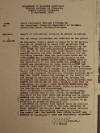
|
17 September
1930.
Report of Information Obtained on Patrol
to SACLIN.
Lt. W. W. Benson, Puerto Cabezas,
to Capt. H. N. Stent, Puerto Cabezas.
"1. The following
information was obtained on the patrol
to SACLIN: On September third a group of
about 20 to 35 bandits arrived in
AGUASBILA at about 3:00 pm, killed JOSE
LLESET, a CUBAN, burned his store, and
returned up the COCO RIVER the same
date, clearing AGUASBILA about 5:30 pm.
It is believed that these bandits were
NICARAGUAN bandits and that LLESET was
killed for the following reasons: When
the revolution broke out in 1926, LLESET
was a CONSERVATIVE and hostile to the
presence of the UNITED STATES NAVAL
FORCES. Most of the inhabitants of the
COCO RIVER are LIBERALS and LLESET was
blackballed by them. However, LLESET saw
that he could make money in his store by
being friendly to the marines, so he
changed his politics accordingly, and
did a thriving business. His former
enemies became his strongest friends and
directed business to him. LLESET feared
the revenge of the bandits for his
change of political faith and for
helping the marines, as did others on
the river. It is believed that LLESET
was killed for this reason, as from time
to time, while the marines still
occupied BOCAY, word was received that
LLESET and others would be killed if the
bandits had the opportunity. ¶ While in
SACLIN, I received two letters from
Lieut. DARRAH stating that he had
arrived in SANGSANG on September 14 and
that there was nothing new to report,
and that the entire river as far as
SANGSANG was peaceful and quiet, Lieut.
DARRAH planned to go AGUASBILA by pitpan
on September 15. ¶ I proceeded no
further than SACLIN since my presence
was not necessary in view of the news
contained in Lieut. DARRAH’S letters,
and the expense involved would not have
warranted my proceeding further. ¶ The
report that the bandits that killed
LLESET were members of ALTAMIRANO’S band
was absolutely unfounded. ¶ Signed W. W.
BENSON"
|
|
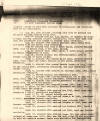
|
1.
21 September 1930.
Report of Trip from Jinotega to
Prinzapolka and Establishment of the
Department. Lt. H. J.
Withers, Prinzapolka, to Area
Commander, Central Area, Jinotega, p. 1.
(Source:
USNA/RG127/E202/Box 13)
|
|
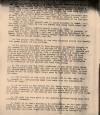
|
2.
21 September 1930.
Report of Trip from Jinotega to
Prinzapolka and Establishment of the
Department.
Lt. H. J.
Withers, Prinzapolka, to Area
Commander, Central Area, Jinotega, p. 2.
(Source:
USNA/RG127/E202/Box 13)
|
|
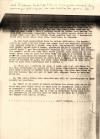
|
3. 21 September 1930.
Report of Trip from Jinotega to
Prinzapolka and Establishment of the
Department.
Lt. H. J.
Withers, Prinzapolka, to Area
Commander, Central Area, Jinotega, p. 3. (Source:
USNA/RG127/E202/Box 13)
|
|
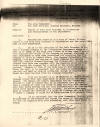
|
4. 21 September 1930.
Report from Col.
C. B. Matthews, Central Area
Commander, to Jefe Director GN, 10
October 1930, forwarding
Lt. H. J. Withers'
Report of Trip from Jinotega to
Prinzapolka and Establishment of the
Department, p. 4.
|
|
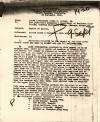
|
1. 22 September 1930.
Report of Patrol (with 7 enclosures),
Lt. Clyde R.
Darrah, Puerto Cabezas, to Dept.
Commander Col. H. N. Stent, Puerto
Cabezas, p. 1.
(Source:
USNA/RG127/E202/Box 13)
"Subject: Report of patrol. ¶ Reference:
Orders dated 9 September 1930 with
enclosures. ¶ Enclosures: (7) ¶ 1.
Forwarded herewith is the report of the
Coco River Patrol which was made by
myself and six (6) enlisted men. ¶ 2.
From information received by this patrol
it is my opinion that, there are a
number of bandits in between Bocay and
Patuca, the number is rumored at between
forty (40) and sixty (60). No one seems
to be positive who the leader of the
group is. Some say, it is a part of
Sandinos outfit and some say, it is a
part of Pedron’s. My opinion is, that
this group has been chased out of Nueva
Segovia District by military operations
there, and figure they can maintain
themselves for a period in the Coco
River District. At present there are
very few supplies to be had in this
district, and do not figure they will
remain there long. The supplies they
stole in Aguas Bila should last them for
a period of two (2) months or more. The
only other places along the river where
they can get more supplies are at Waspok
and Sang Sang. In Sang Sang I estimated
the supplies on hand to be worth about
six hundred ($600.00) and in Waspok
about four hundred ($400.00) dollars. I
advised the owners of both stores to
move everything down river, and as they
seem to think that the bandits will kill
them, also advised them to stay out of
the upper river district. ¶ There are
several persons who reported to me that,
they were notified, they would be killed
as Jose Lleset was at a later date. All
of these have left and are now in Cabo
Gracias or Ulwas. The reason for the
threat against their lives is, that
while the Marines were operating in the
Coco District these persons had given
them aid and information against the
bandits. The names of the different
persons threatened are:-- ¶ Mr. Alfred
Webster, Sang Sang. ¶ Mr. Allen Miller,
Waspok. ¶ Mr. Lee Miller, Waspok. ¶ Mr.
Abram Martinez, Sang Sang. ¶ Mr. Joaquin
Alvarado, Waspok. ¶ Mr. Michael A.
Thompson, Sang Sang."
|
|
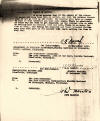
|
2.
22 September 1930.
Report of Patrol (with 7 enclosures),
Lt. Clyde R.
Darrah, Puerto Cabezas, to Dept.
Commander Col. H. N. Stent, Puerto
Cabezas, p. 2.
(Source:
USNA/RG127/E202/Box 13)
"Subject: Report of patrol. ¶ It is my
opinion that if the owners of the stores
in Waspok and Sang Sang take my advise,
and that the persons threatened do not
go back up the river, the bandits will
have no reason to stay in that district
and will soon leave. There is absolutely
no other way for them to get supplies,
as the Indians live on next to
nothing—such as bananas, fish and corn.
There is no money for them to steal, and
taking the supplies and their intended
victims away from that part of the
country will leave nothing for them to
stay for. ¶ Signed C.R. Darrah—¶ 1st.
Endorsement. 24 September, 1930. ¶
DEPARTMENT OF NORTHERN BLUEFIELDS,
GUARDIA NACIONA DE NICARAGUA, PUERTO
CABEZAS, NICARAGUA. ¶ From: The
Department Commander. ¶ To: The Area
Commander, Area of the East, Guardia
Nacional, Bluefields, Nicaragua. ¶ 1.
Forwarded. Signed W.W. Benson.-- ¶ 2d
Endorsement. ¶ HEADQUARTERS EASTERN AREA
GUARDIA NACIONAL ¶ Bluefields, Nicaragua
27 September 1930 ¶ From: The Area
Commander. ¶ To: The Jefe Director,
Headquarters Guardia Nacional de
Nicaragua, Managua, Nicaragua. ¶ 1.
FORWARDED. JOHN MARSTON (signed)"
|
|
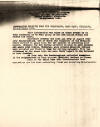
|
3.
22 September 1930.
Report of Patrol (with 7 enclosures),
Lt. Clyde R.
Darrah, Puerto Cabezas, to Dept.
Commander Col. H. N. Stent, Puerto
Cabezas, p. 3.
(Source:
USNA/RG127/E202/Box 13) "INFORMATION
RECEIVED FROM THE COMANDANTE, SANG SANG,
NICARAGUA, 17 SEPTEMER 1939. ¶ This
information was taken as there seemed to
be some confusion as to what group of
men had killed Cubano and sacked his
store. ¶ Somewhere between the 15th and
20th of August 1930 four Hondureanians,
one of which was Inspector of the
Mosquito Coast arrived at Aguas Bila for
the purpose of arresting Jose Lleset,
(Cubano) for not having procured license
to sell whiskey and guaro from Trujillo,
Honduras, Also several Mosquito Indians
were arrested and fined by them for
cutting mahogany. This was witnessed by
the Arana boys who made their report to
the Governor at Cabo Gracias. ¶ On this
trip the Hondureanians collected
somewhere in the neighborhood of four
hundred ($400.00) dollars in fines. ¶
This is the third time that
Hondureanians have arrived on the Rio
Coco collecting fines and molesting
Nicaraguans.
|
|
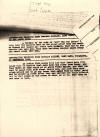
|
4.
22 September 1930.
Report of Patrol (with 7 enclosures),
Lt. Clyde R.
Darrah, Puerto Cabezas, to Dept.
Commander Col. H. N. Stent, Puerto
Cabezas, p. 4.
(Source:
USNA/RG127/E202/Box 13)
"A boatman by the name of “Leo” who
was forced to help take the bandits back
up the river after they had murdered
Cubano and sacked his store told
Richard, that one of the bandits had
told him, they were building shelter
above Bocay for about sixty (60) men. ¶
INFORMATION RECEIVED FROM BERNARD
MILLER, SANG SANG, NICARAGUA, 17
SEPTEMBER 1930: ¶ An Indian from Asang
told him that there were five boats full
of bandits that came down the river from
Bocay, and that three of them stayed at
or above Tilba Rapids, and that two went
to Aguas Bila with about twelve men. And
also they were given orders not to go
any lower than Aguas Bila by their jefe,
and to return up river after they had
carried out their mission, but to what
place no one seems to know, or it is,
that they do not care to tell."
|
|
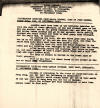
|
5.
22 September 1930.
Report of Patrol (with 7 enclosures),
Lt. Clyde R.
Darrah, Puerto Cabezas, to Dept.
Commander Col. H. N. Stent, Puerto
Cabezas, p. 5.
(Source:
USNA/RG127/E202/Box 13)
Information received from Maria Chacon,
wife of Jose Lleset, Aguas Bila, Nic.,
16 Sept. 1930, and Carlos Coleman, Sang
Sang, Nic., 17 Sept. 1930. ¶
Bandits must have been in the building
sometime before she knew of their
presence, as she had already gone to bed
and was asleep. One of the group
awakened her, and told her, she had
better leave quickly and go to her
parents. While getting dressed she heard
Cubano ask them to what group they
belonged, and the reply was, to
Sandinos. ¶ On leaving she said, she saw
three good size boats, but as to the
number of the men she does not know, but
from the noise they made there must have
been quite a few. ¶ The bandits took all
food and other supplies in the store and
all clothing that belonged to the family
from the house. ¶ After having sacked
the building they tried to burn it, but
only managed to burn a place about three
and a half feet high and eight inches
wide. ¶ The body of Cubano is buried in
the front yard of their property. ¶ This
is all that the woman knows of the
affair as she was so badly frightened. ¶
INFORMATION RECEIVED FROM CARLOS
COLEMAN, SANG SANG, NICARAGUA, 17
SEPTEMBER 1930. ¶ Coleman is attending
to the store of Abram Martinez in Sang
Sang, and was told the following by
(M)osquitos:-- ¶ That bandits would
return about the end of the month to rob
the store at Sang Sang and the one at
Waspok. ¶ Where the Indians got this
information is more than anyone seems to
find out.
|
|
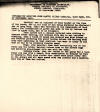
|
6.
22 September 1930.
Report of Patrol (with 7 enclosures),
Lt. Clyde R.
Darrah, Puerto Cabezas, to Dept.
Commander Col. H. N. Stent, Puerto
Cabezas, p. 6.
(Source:
USNA/RG127/E202/Box 13)
Information received from Manuel Olivas
Carbajal, Sang Sang, Nic., 17 Sept.
1930. ¶ Carbajal was an
employee of Jose Lleset at the time of
his death, but at the time of his being
murdered he, (Carbajal) was in Sang
Sang. (This was verified by the
Comandante of Sang Sang). The
information he gives was told to him by
Indians who live in Aguas Bila, and is
as follows:-- ¶ Jose Lleset and J.
Manuel Carbajal were sitting in Cubanos
store talking, and Cubanos wife was in
her bedroom sleeping, when a bunch of
armed men entered and tied Cubano up and
started lecturing him about having
helped the Marines when they were
operating in that district, and made it
clear to him that he was to be murdered
for the same. ¶ They, (the bandits) then
took everything out of the store and the
house, marched Cubano down to the rivers
edge and murdered him. Cubano’s wife ran
with her baby. ¶ Indians state, that the
leader of the group was a tall, stout
old man with a beard. This description
is similar to that of Pedron’s. They
also stated that there were about fifty
(50) in the group, and all were armed
with two pistols and a machete, very few
of them had rifles.
|
|
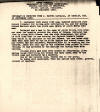
|
7.
22 September 1930.
Report of Patrol (with 7 enclosures),
Lt. Clyde R.
Darrah, Puerto Cabezas, to Dept.
Commander Col. H. N. Stent, Puerto
Cabezas, p. 7.
(Source:
USNA/RG127/E202/Box 13) ¶
Information received from J. Manuel
Carbajal, at Sacklin, Nic., 10 Sept.
1930. 3 September 1930 about 9:30
p.m. bandits murdered Jose Lleset
(Cubano) for having given information
to, and for having helped Marines about
two years ago, group of about fifty (50)
men. ¶ Carbajal and a man by the name of
Abram Rivera were present when the
bandits entered the store of Cubano.
Carbajal was tied up along with Cubano,
and was also threatened, but after he
told them that he was working for
Captain Brown’s Lumber Camp which is in
Honduras he was not harmed, but was
taken with them when they left as far as
Tilba Rapids and turned loose. The man
Rivera was not molested. Reported that
he is cooking for the bandits. About one
year ago he was released from prison in
Bluefields. He was arrested by the
Marines for having been with Sandino. ¶
Cubano’s store and home were sacked of
everything. After having taken
everything out Cubano was then taken
down to the river’s edge and murdered by
(with) a machete. ¶ One of the bandits
said, Pedron was in the group. ¶ No
names were mentioned. They all called
each other, general, coronel or capitan.
|
|
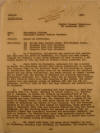
|
1.
23 September 1930.
Report of Activities,
Lt. W. W. Waddell,
Puerto Cabezas, to CO Special Service
Squadron, USS Asheville, p. 1. (Source:
USNA/RG127/E38/Box 18)
SUBJECT: Report of Activities. ¶
ENCLOSURES: (A) Letter from Captain
Stent, USMC.National Guard. ¶ (B)
Despatch from Cape Gracias. ¶ (C)
Despatch from Cabo Gracias. ¶ (D)
Despatch from Cape Gracias. ¶ 1. On 3
September, information was received that
bandits had come down the river to
Aguasbila, and killed one Jose Lleset,
(called the Cubano), a well known
merchant of that vicinity. A detailed
report of this was made by Captain
Stent, enclosure (A). ¶ 2. About 1600,
11 September, enclosure (B) was received
on board. The commanding officer went
ashore immediately to consult with
Captain Stent of the National Guard. He
had received no report or information
from the patrol sent out to investigate
the previous report nor any other
information. The radio station at Puerto
Cabezas got in touch with the station at
Gracious (Gracias) and obtained
additional information enclosure (C).
Captain Stent was of opinion that
bandits in this vicinity would have been
reported by his patrol, but nevertheless
sent out another patrol of sixteen (16)
men and two (2) officers. ASHEVILLE left
at 2300 for Cape Gracious and arrived
0700, 12 September. ¶ 3. Shortly after
anchoring off Cape Gracious, a boat came
alongside with H. H. Fagot, (brother of
Albert Fagot), F. S. Belcher, and J.
Asmussen, on board. Mr. Belcher is
representative of the Nicaraguan
Products Company, a New York Company.
Mr. Fagot and Mr. Asmussen are local
business men, Mr. Asmussen with a branch
at the mouth of Waspook River. All were
quite scared and fearful for the details
of the killing of Jose Lleset at
Aguasbila, which occurred about 3
September. This they had obtained
indirectly from one Manuel Carbajal, who
was visiting Lleset but managed to
escape from the bandits. Lleset was
apparently tortured and mutilated.
Carbajal, was then at Sacklin. The
bandits have since been reported further
down the river, all reports are
indefinate, no first or second hand
information as to actual seeing of
bandits. ¶ 4. Mr. Fagot left Coom, (15
miles below Sacklin) at noon 10
September, arriving Cape Gracious 11
September. The bandits were ¶ -1- ....
|
|
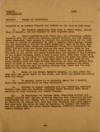
|
2.
23 September 1930.
Report of Activities,
Lt. W. W. Waddell,
Puerto Cabezas, to CO Special Service
Squadron, USS Asheville, p. 2. (Source:
USNA/RG127/E38/Box 18)
.....reported to be between Waspook and
Sacklin at the time he left Coom. ¶ 5.
The bandits originally came down in
seven boats, (according to report), but
are thought to have captured more. ¶ 6.
After conferring with these men, the
commanding officer together with the
executive officer, marine officer, and
the landing force commander, went ashore
to inspect the surroundings of the town
in case it should be necessary to send a
landing force ashore. Nearly all the
surrounding country is delta formation,
most of it bog, completely covered with
trees and underbrush. There is a landing
at the town, and the first one above
this on the same (north) side of the
river is at the station of ILAYA, which
is about two (2) miles above the fork in
the river. The party landed here and
walked to the interior to the Indian
Village, about a half a mile back. From
here there is a path leading to the
ocean to the north, coming out near the
north fork of the river. There is also a
path from near the north fork of the
river leading into the town of Cape
Gracious, so that the return trip could
be made in this way, but it would
involve crossing the north fork of the
river as well as wading through bog.
These are the only paths on the north
peninsula. ¶ 7. South of the river,
Green’s Sawmill, is just above the town
near the canal shown on the chart, and
there are paths connecting with the
ocean. ¶ 8. In general there is no
suitable place for a landing force and
operations would be very difficult. ¶ 9.
Decided to remain anchored off Cape
Gracious. Awaiting further news from the
bandits. Arranged radio schedule with
shore stations at Cape Gracious and
Puerto Cabezas. ¶ 10. 13 September. No
further news. Executive officer and
medical officer went ashore, although
weather bad. Executive officer
interviewed Mr. W.J. Green, who is
considered most level headed man in
vicinity. He stated that word had been
received that more people had come down
the river in fear of bandits. He thought
the bandits may have come down the river
beyond Waspook. ASHEVILLE returned to
Puerto Cabezas 2400. ¶ -2- ....
|
|
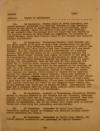
|
3.
23 September 1930.
Report of Activities,
Lt. W. W. Waddell,
Puerto Cabezas, to CO Special Service
Squadron, USS Asheville, p. 3.
(Source:
USNA/RG127/E38/Box 18) ...
11. 14 September. During night of
13-14 September, received message,
enclosure (D), from Mr. Belcher of Cape
Gracious, stating he had report of
Lieutenant Benson of the Guardia, which
we did not receive, since the ASHEVILLE
had left Cape Gracious. It was evident,
from the message that the scare had been
caused by the original killing of Jose
Lleset at Aguasbila. On arriving at
Puerto Cabezas, found that Captain Stent
of the Guardia had received similar
information. ¶ 12. 13 September.
Nicaraguan Holiday. Full dressed ship
and fired salute of 21 guns at noon.
Made preparations for leaving for
Bluefields. Late afternoon, while
ashore, commanding officer was informed
by Captain Stent that he had been
informed by a man named Schmidt, that
he, Schmidt had heard a conversation in
a cantina stating that there was going
to be a local uprising against the
Bragmans Bluff Lumber Company that
night. He stated it was said in the
conversation that the ASHEVILLE was
sailing at seven p.m. He stated that one
Judge Humberto Ramirez was present with
the party holding the conversation, that
he was sure of this although the party
was in another room. Captain Stent had
interviewed Judge Humberto Ramirez, who
denied that he was present at the
cantina, or made any such statement. The
commanding officer talked to Schmidt,
but gained no further information.
Schmidt is German, but speaks both
English and Spanish. There seemed no
reason for an uprising against the
Bragmans Bluff Lumber Company, other
than possibly a Communist uprising,
however since this was a holiday and
many people from the country and other
localities were in town, it would seem a
good time for such an uprising, if one
were intended. After talking with
Captain Stent and Mr. Scott of the
Bragmans Bluff Lumber Co., it was
decided that there was no reason to
fear. Arrangements were made for a
schedule with the local radio station
after leaving and the ASHEVILLE left at
1900 for Bluefields. ¶ 13. 15 September.
Arrived at Bluefields. Commanding
officer talked to Colonel Marston of the
Guardia and Mr. Fletcher, American
Counsel. Captain Best was in Managua.
Information received from Col. Marston
and Lieutenant Holdahl, (senior member
of the Electoral mission in Bluefields),
was to the effect that there were no
disturbances and everything was
proceeding satisfactorily. ¶ 14. 17
September. Proceeded to Great Corn
Island. Commanding officer called on
Governor and obtained general
information regarding the Island. ¶15.
19 September. Proceeded to Little Corn
Island, obtained general information and
proceeded to Puerto Cabezas. ¶-3- ....
|
|
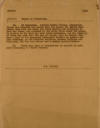
|
4.
23 September 1930.
Report of Activities,
Lt. W. W. Waddell,
Puerto Cabezas, to CO Special Service
Squadron, USS Asheville, p. 4.
(Source:
USNA/RG127/E38/Box 18)
...16. 19 September. Arrived Puerto
Cabezas. Lieutenant Benson had returned
and stated that the people who killed
Jose Lleset came down the river and
after killing him attempted burn his
store, and returned up the river after
about two hours. No bandits of any kind
had come below Aguasbila, and the
identity of those who came this far was
not known, that is whether they were a
part of the organized Nicaraguan bandits
or perhaps men from Honduras, or the
disputed territory between Honduras and
Nicaragua, who for some reason had a
grudge against Lleset. ¶17. There have
been no occurrences or reports of note
since returning to Puerto Cabezas.
|
|
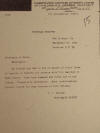 |
1.
27 September 1930.
Telegrams from J.
F. Muller, New Orleans LA, to
Sec. State Washington D.C., & related
correspondence in the case of his
brother Benny F. Muller & family, Sawa
Boom, Nic., p. 1.
|
|
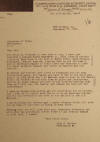
|
2.
27 September 1930.
Telegrams from J.
F. Muller, New Orleans LA, to
Sec. State Washington D.C., & related
correspondence in the case of his
brother Benny F. Muller & family, Sawa
Boom, Nic., p. 2.
|
|
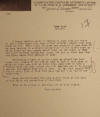
|
3.
27 September 1930.
Telegrams from J.
F. Muller, New Orleans LA, to
Sec. State Washington D.C., & related
correspondence in the case of his
brother Benny F. Muller & family, Sawa
Boom, Nic., p. 3.
Letter
from Benny F.
Muller, Sawa Boom, to brother
John Muller, USA, 11 Sept. 1930:
"Sawa Boom 9/11/30. ¶ A large raiding
party of Sandino's came down the River
so far I have heard they have killed
several, expect they have burnt me out.
Wife eight children one grandchild came
down to me here leaving on a minute
notice four of the oldest boys up at my
place am very uneasy about them, as the
rumor is they are three hundred strong
well armed and are on their way down the
river maybe Port Cabezas or Cape.
¶ Everything I have is up the river am
afraid has been burnt out, please to not
get my name to any of this news in print
as they have told up River they came
down to make a lesson every one that
helped the U.S. Marines are to be killed
and all the damage they can do them. So
far have caught only one of their list
of five they want bad and I am one of
the other four. ¶ Hope the Government will
put a good force at the foot of the
falls for protection of the river. This
is in a rush to get this off by chance. /s/ Your brother
"
|
|
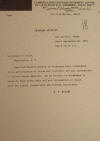
|
4.
27 September 1930.
Telegrams from J.
F. Muller, New Orleans LA, to
Sec. State Washington D.C., & related
correspondence in the case of his
brother Benny F. Muller & family, Sawa
Boom, Nic., p. 4.
Telegram from
T. V. Muller,
San Antonio TX, to Sec. State, 29 Sept.
1930.
|
|
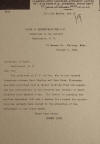
|
5.
27 September 1930.
Telegrams from J.
F. Muller, New Orleans LA, to
Sec. State Washington D.C., & related
correspondence in the case of his
brother Benny F. Muller & family, Sawa
Boom, Nic., p. 5.
Letter from
Rep.
Robert Luce,
Waltham, Mass.,
to Sec. State, 1 Oct. 1930.
|
|
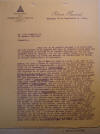
|
29 September
1930.
Letter from
Benjamin Abaunza, Ministerio de
la Gobernación y Anexos, Palacio
Nacional, Managua, to Jefe Director GN,
Managua, p. 1.
|
|
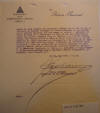
|
29 September
1930.
Letter from
Benjamin Abaunza, Ministerio de
la Gobernación y Anexos, Palacio
Nacional, Managua, to Jefe Director GN,
Managua, p. 2.
Resolution
passed by the Comerciantes y algunos
vecinos of Cabo Gracias a Dios, asking
for two new Guardia posts at the mouths
of the Waspook and Tilba Rivers. Signed
by: Manuel Gardner, Nicaraguan Products
Corp. P. Gardner.
O.R. Moore. A. Fagot.
H.E. Fagot. J. Asmussen.
Wuing Chong. E. Chong.
Abdul Jobbar. Salvador
Mairena. Martín Miranda.
F.A. Alvarez. Paco Jarquín
H."
|
|
|
|
|
PREVIOUS
NEXT
|
|
|
|
|
|
|
|

